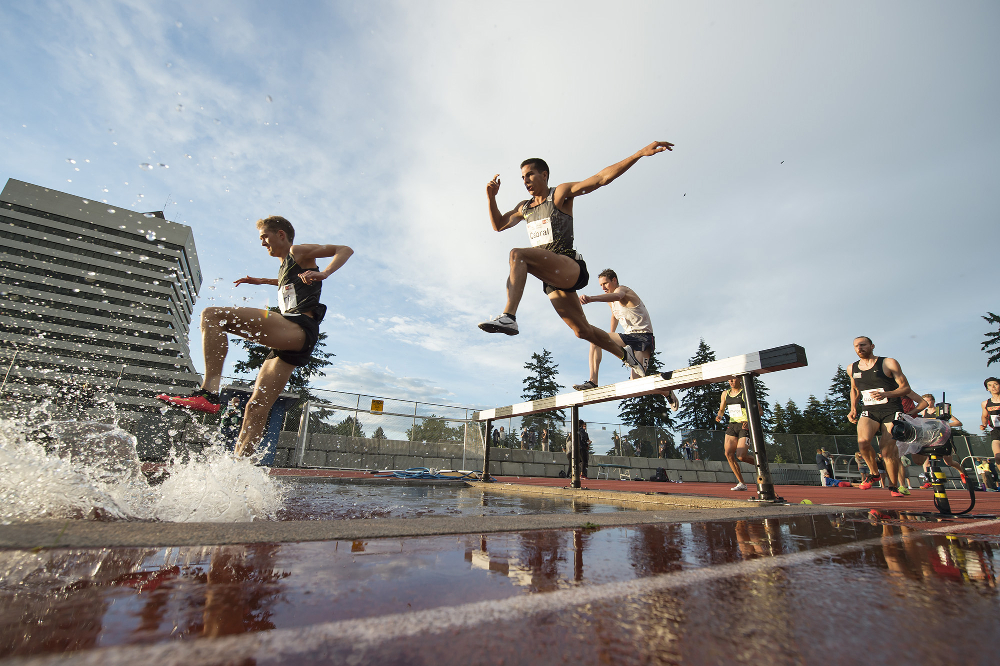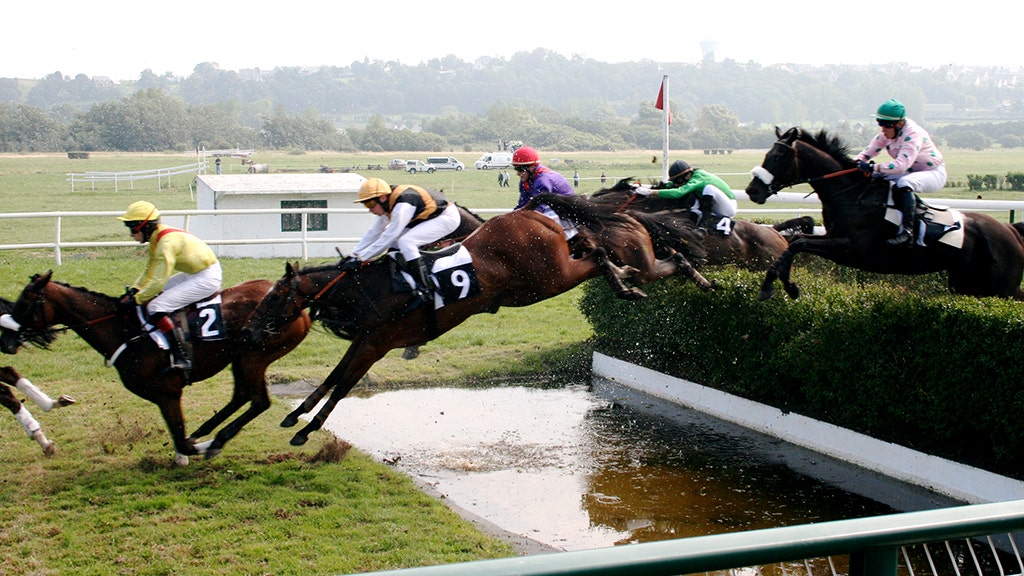The Mechanics of a Steeplechase Fall

The steeplechase, with its unique obstacles, poses a significant risk of falls for athletes. Understanding the mechanics behind these falls is crucial for both athletes and coaches to implement preventative measures and improve safety.
Common Causes of Falls
The most common causes of falls in steeplechase races stem from the inherent challenges of navigating the obstacles.
- Tripping: The most frequent cause of falls is tripping over the barriers, especially when athletes are fatigued or their footwork is compromised.
- Slipping: The water jump, with its wet and slippery surface, poses a significant risk of slipping, leading to falls.
- Collisions: While less common, collisions with other athletes can occur, particularly during the water jump, leading to falls.
The Impact of the Water Jump on Fall Frequency
The water jump is a unique obstacle that significantly increases the risk of falls.
- Wet Surface: The wet surface of the water jump creates a slippery environment, increasing the likelihood of slipping.
- Momentum: The momentum of the athlete as they approach the water jump can contribute to a loss of balance, making it difficult to maintain control and increasing the chance of falling.
- Depth: The depth of the water jump can also play a role, as athletes may misjudge the depth and land awkwardly, leading to a fall.
Biomechanics of a Steeplechase Fall
Understanding the biomechanics involved in a steeplechase fall is essential for identifying potential risk factors and developing preventative strategies.
- Forces: The forces involved in a fall are complex and depend on the specific circumstances. However, the most significant forces are those related to the athlete’s momentum, the impact of the fall, and the friction between the athlete’s body and the ground.
- Movements: Falls often involve a combination of movements, including twisting, turning, and impacting the ground at an awkward angle.
Types of Falls and Their Causes
| Type of Fall | Typical Causes |
|---|---|
| Tripping | Foot placement, fatigue, lack of focus, uneven terrain. |
| Slipping | Wet surface, poor footwear, lack of traction, misjudged momentum. |
| Collision | Lack of awareness, poor communication, close proximity, jostling for position. |
The Consequences of a Steeplechase Fall: Men’s Steeplechase Fall

A steeplechase fall, with its inherent risk and unpredictable nature, can have serious consequences for the athlete, both physically and mentally. The impact of the fall, the terrain, and the speed at which the athlete is running can all contribute to the severity of the injuries sustained.
Physical Injuries
The immediate and long-term physical injuries that can result from a steeplechase fall are a significant concern. These injuries can range from minor abrasions and bruises to severe fractures and dislocations. The most common injuries include:
- Concussions: A concussion is a brain injury caused by a blow to the head or a sudden shaking of the head. It can cause a range of symptoms, including headache, dizziness, nausea, and memory problems.
- Fractures: A fracture is a break in a bone. The impact of a fall can cause fractures in the legs, arms, ribs, and spine.
- Dislocations: A dislocation occurs when a bone is forced out of its joint. This can happen in the shoulder, elbow, wrist, hip, knee, or ankle.
- Ligament and Tendon Injuries: These injuries occur when the ligaments or tendons that connect bones to each other are stretched or torn. Common examples include sprains and tears in the ankle, knee, and shoulder.
- Muscle Strains and Tears: A muscle strain occurs when a muscle is stretched or torn. This can happen in the legs, back, and shoulders. A tear is a more severe injury, involving a complete or partial rupture of the muscle.
Psychological Impact
The psychological impact of a steeplechase fall can be significant. The athlete may experience:
- Loss of Confidence: A fall can shake an athlete’s confidence, making them hesitant to take risks and potentially affecting their performance.
- Fear of Injury: The fear of re-injury can be a major obstacle for athletes who have suffered a fall. This fear can lead to a reluctance to train or compete at their full potential.
- Motivation Loss: A fall can be a discouraging experience, leading to a loss of motivation and a decrease in the athlete’s drive to succeed.
- Emotional Distress: A steeplechase fall can cause emotional distress, including anxiety, depression, and post-traumatic stress disorder (PTSD). The athlete may experience flashbacks, nightmares, and difficulty coping with the event.
Common Injuries and Treatments, Men’s steeplechase fall
The following table highlights some of the most common injuries sustained in steeplechase falls, their severity, and potential treatment options:
| Injury | Severity | Treatment |
|---|---|---|
| Concussion | Mild to severe | Rest, observation, and medical evaluation. In severe cases, hospitalization may be required. |
| Fracture | Mild to severe | Immobilization, surgery, or a combination of both. |
| Dislocation | Mild to severe | Manual reduction (putting the bone back in place) and immobilization. Surgery may be necessary in some cases. |
| Ligament and Tendon Injuries | Mild to severe | Rest, ice, compression, and elevation (RICE). Physical therapy may be required. Surgery may be necessary in severe cases. |
| Muscle Strains and Tears | Mild to severe | Rest, ice, compression, and elevation (RICE). Physical therapy may be required. Surgery may be necessary in severe cases. |
The men’s steeplechase fall, a jarring image of broken momentum, echoes a similar sense of loss found in the cultural history of quincy hall gold teeth , a symbol of both resilience and hardship. The gold teeth, once a mark of status and prosperity, now reflect a complex legacy of economic struggle and cultural change, much like the athlete’s fall, a momentary setback in the pursuit of victory.
The men’s steeplechase fall, a jarring moment of defeat, echoes the fragility of even the most determined athlete. It reminds us of the rooks steeplechase, a playful dance of feathered acrobatics, where the hurdles are mere branches, and the prize is not a medal, but the joy of flight.
Read more about the rooks steeplechase here , a fascinating study in natural agility. And yet, even in their aerial ballet, the rooks sometimes stumble, their wings momentarily losing their grace. Perhaps in this shared vulnerability, we find a connection between the human and the avian, a reminder that even the most skilled can fall, but that the desire to rise again remains a constant.